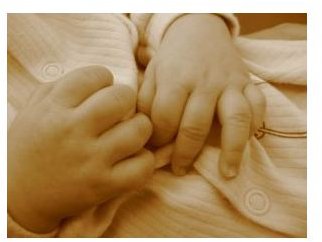Stages of Labor and Delivery
Mental Preparation
As your due date gets closer, you should review the stages of labor and delivery to prepare yourself for the stressful yet rewarding experience of childbirth. Every woman experiences the birth of the child differently. However, there is a distinct pattern of stages through which you will endure. Each step along the way brings you one bit closer to holding your baby in your arms for the first time.
Three Stages of Labor
There are three stages of labor, marked by contractions which occur in waves. The interval between these contractions gives an indication of how imminent childbirth is. Labor begins with the dilation of the cervix. The cervix will dilate to 10 centimeters to allow passage of the fetus through the vagina.
First, the cervix thins in the early stages of labor and delivery during what is called early labor. The period leading up to complete dilation may take several hours. During this stage a vaginal discharge may occur. The amniotic sac will burst, opening up space for the fetus to move toward the birth canal. Contractions become more intense and closer together going into active labor.
Active Labor
Active labor marks the lead-in to the more intense stages of labor and delivery. Contractions become forceful. Pain become so intense that you may not be able to talk through them. They will also last for relatively long periods up to 60 seconds. The fetus will begin its descent.
This period of final dilation is referred to as transition. Pain may be overwhelming at this point. The time varies when you will be in transition from minutes to a few hours. This can be one of the most physically and mentally draining periods of which you experience.
Expulsion Stage of Labor
The expulsion stage of labor begins once the cervix is fully dilated. This stage is also known as the pushing stage, since this will mark this stage whether it is voluntary or involuntary. Your midwife or nurse will talk you through this period, instructing you on what to do. You may be given an epidural to help you manage your pain.
Soon, the baby’s head will become visible. Your caregiver may encourage you to move slowly through this stage to prevent tearing of the perineum, or area between your vagina and anus. Finally, the baby’s head will emerge. By instinct, the baby will move its way through the birth canal, with the ready assistance of your caregiver until she emerges completely.
Placental Stage
The final stage of labor is the placental stage. Contractions resume as your body begins to expel the placenta or afterbirth. After it is expelled, your uterus will contract to cut off blood flow to the vessels which attached to the placenta.
The stages of labor hold the promise of new life despite the pain and discomfort. It is part of the beauty of being a woman that you can experience life as it happens. After your child’ birth, you begin your new journey of parenthood and discovery.
Photo by lraine, stock.xchng
References
BabyCenter LLC: Stages of Labor www.babycenter.com
G. Tortora et al. Principles of Anatomy and Physiology. 2005.
